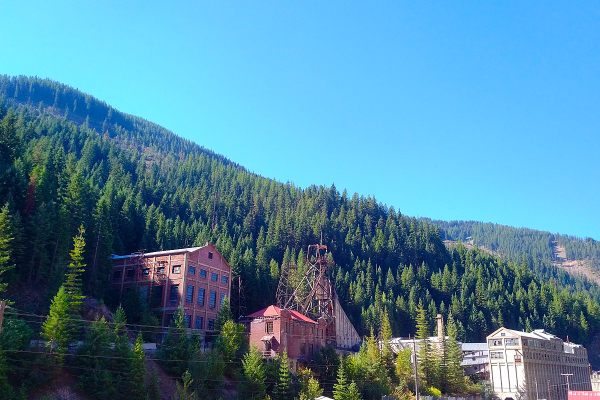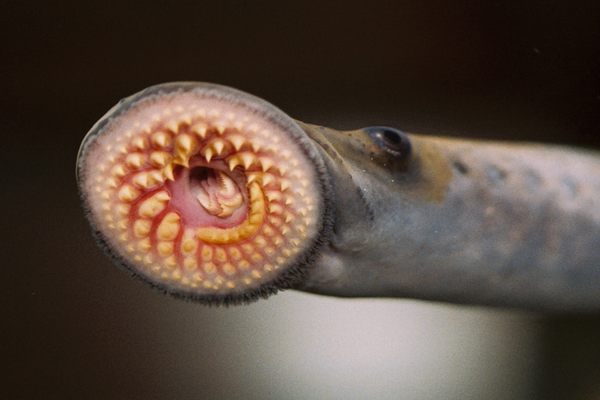Why NASA Is Watching Where Idaho’s Parachuting Beavers Landed
The mini-paratroopers have a new role to play today.
If you were wandering the wilds of the Wasatch National Forest in Utah in September 2023, you might have encountered a strange sight: a line of slowly marching horses, with beavers saddled on their backs. Unfortunately, the rodents were not wearing tiny cowboy hats and boots. They were inside carriers, but their journey via horseback was still a fairly Wild West–type of solution to a problem. These beavers were headed to a new home—a battleground in the fight against drought and wildfires in the region.
“We would need two people to carry a beaver, normally, whereas a horse can carry two per horse,” explains Nate Norman, lead biologist for the Beaver Ecology and Relocation Center at Utah State University. Norman has trekked with a 60-pound beaver, in a 20-pound carrier, on his back, so he knows how unwieldy they can be. He’s also helped others hoist cages attached to rods onto their shoulders like a litter, “kind of like Cleopatra,” he says. The horses are far more efficient at transporting large groups.

For decades, people have gone out of their way to move beavers across great distances. Today’s preferred methods—hiking, humping, and horseback rides—are an improvement over 1948, when beavers were parachuted out of planes in Idaho. Back then, Idaho Fish and Game had loaded the animals into boxes designed to spring open upon landing, and then dropped them over the Sawtooth Mountain Range.
“At the time, when you had a bunch of out-of-work paratroopers post–World War II getting state jobs, and a bunch of airplanes that weren’t being used, and cheap fuel, yeah, that was an affordable option. Not so much today,” says Joe Wheaton, a river restoration expert also at Utah State.
However, the reason behind all of this shuttling beavers around has completely reversed since the 1940s. Then, they were being sent to remote locations because humans didn’t want them around. Today, in Idaho, Utah, and other sites, they’re being brought back. Beavers are ecosystem engineers—and the ecosystems they create happen to be key to limiting wildfires and managing drought conditions. The mini-paratroopers have been revealed to be mini-firefighters, and it was the results of that aerial feat in 1948 that helped kick it all off, at least once NASA took notice.

Beavers had been in serious trouble in the United States as far back as the 1600s. Because of trapping for their pelts, the North American beaver (Castor canadensis) dwindled from at least 60 million to 100,000 by the 19th century. “The fur trade is what really led to their demise,” Wheaton says. “Thankfully, the winds of fashion changed just in time” to save them from extinction. Over the next couple centuries, beavers started spreading again and populations began increasing; today they hover around 10 or 15 million. However, because they’re both nomadic and adaptable, the critters have often run afoul of people.
“Growing up, we always viewed them as a nuisance,” says Jay Wilde, a rancher in Idaho who became involved in beaver restoration. “They were always plugging our irrigation ditches and culverts and flooding places.” It was common for his neighbors to just get rid of them. “My guess is they were either trapped or shot,” he says. But Wilde noticed that something else was changing, too.
When he was a child, the stream on Wilde’s property flowed all year long, but by the time he became an adult, the water would dry up each July. “When I returned, there were no beavers, and it got me wondering: Maybe that was part of the reason why the green was drying up,” he says.
The more Wilde read about beavers, the more he was convinced of their importance to a healthy, functional ecosystem. So in 2006, Wilde approached the National Forest Service about bringing beavers back to his land. With the help of a government trapper—who normally would catch beavers to get rid of them—he brought a few home. But they didn’t stay. The rodents were either killed by predators or ran off to find a better spot. “Evidently, I don’t know much about relocating beavers,” says Wilde.

Wilde read about Joe Wheaton in Utah, who relocates beavers with his stream-restoration company Anabranch Solutions. Over the next few years, they started by building man-made beaver dams, called Beaver Dam Analogs (BDAs), so the semiaquatic mammals would have a home upon arrival. The duo then released more than 6 beavers to the area in 2015. This time, they stuck around.
Over the next few years, the stream began flowing for an extra 42 days per year on average. Soon it reached 75 days. And this past year was the first time the stream flowed year-round. What was once dry grassland is now flourishing with willow trees and bushy greenery such as sedges and rushes. The presence of fish significantly increased, too, from five per 100 linear meters of stream the past few decades to 170. Many birds and even moose have made appearances. “All the scientists will tell you that beavers are a keystone species,” Wilde says.
Beavers aren’t trying to make healthy ecosystems. They’re just doing their thing. The rodents are semiaquatic. They stash their food in mud underwater and live in wood lodges that have submerged entrances so they can escape predators. When they move to a new pond, they build dams to flood the area and ensure the water is deep enough for their lifestyle.

Anyone who’s seen a dam made of sticks knows that water eventually finds its way around and through, so beaver dams just slow water down enough to spread out, pool, soak the soil, and create wetlands. Without beaver dams, rainfall and snowmelt are more likely to rush through a landscape in a narrow channel.
“Take a glass of water and a big sponge,” says Wheaton. “Pour water on that sponge and you can time how long it takes to dry out—it takes a hell of a long time. Get a pair of scissors out, you cut it in half, pour the exact same amount of water, it dries out a lot quicker. Then you cut it up again and again and again. It’s wet for a few minutes and that’s it.” Wheaton says. Beaver dams create bigger sponges.
“Resaturating those sponges is what we call the water magic trick,” Wheaton explains. “There’s an illusion that you have more water through time,” because the land has increased vegetation, forests, and wetlands. “But you actually don’t have any more water. You may even have a little bit less, but you’re not impacting flow in a way that culminates downstream negatively locally.”
And a dry sponge is much easier to light on fire than a wet one. “It’s really hard for wet areas, with lush plants and even standing water, to burn,” says Emily Iskin, a postdoctoral research fellow on the beaver rewilding project led by Jodi Brandt of Boise State University. The benefits extend beyond fire resistance. “The same properties that make beaver meadows resistant to fire can also contribute to drought resilience,” Iskin says.

Sure, we could try to replicate the impact of beavers with BDAs and other human-made interventions, but it’s not the same without a caretaker. “I mean, beavers are living there, they’re out there working on it all the time,” Wheaton says. Like any good homeowner, they know when maintenance is needed. “When they’re there, they make the decision to keep the water backed up, to plug little leaks with mud, and to maintain those things.”
Beavers’ impact isn’t only apparent from the ground. It’s so large you can see it from space, and even NASA has taken notice.
“It’s what sometimes I call ‘the real NASA,’” says Cindy Schmidt, associate program manager for NASA’s Ecological Conservation Program, with a laugh. “We may be not as well known as the space and planetary side—we haven’t, you know, sent people to the Moon.” NASA has used satellite imagery over the years to investigate how conservation programs, such as these kinds of rewilding efforts, impact entire landscapes.
When the organization sent a request for proposals for rewilding projects, Boise State’s Brandt applied, and beavers caught the panel’s attention. “As you may have guessed, we can’t actually see those species from space,” says Schmidt. “So what we’re really looking at is their habitat.”

NASA’s network of satellites take images of the surface regularly, and in some places their photographic records go back decades. NASA analysts can see the impact of all those beavers that were parachuted around Idaho in the 1940s. Shortly after that operation, something remarkable happened to those remote locations. Baugh Creek, which received many animal packages from the sky, became so lush and verdant that the greenery clearly stood out from space. A 2018 wildfire torched the surrounding land, but Baugh Creek’s beaver-rich “emerald refuge” resisted the blaze.
“It can be really powerful to connect images from space to experiences on the ground,” Iskin says.
On top of the satisfaction of watching previously dried out lands flourish, everyone involved has benefited from the added bonus of actually getting to work with beavers. “They’re so cute. I could have sat and watched that beaver all day,” says Schmidt.
For Nate Norman, working on the beaver reintroduction project in Utah, the best part about the project is releasing the beaver families into the wild. “They do what I call the soldier crawl, where they’re on their bellies, and they’re kind of just trying not to be observed—while we’re all sitting there with our cameras and videos watching them leave the cage. But they think they’re being sneaky,” Norman says. “Most of the time they see the water, do their little army crawl, and then go and hide. Sometimes the cool ones do a little slap of their tail just before disappearing under the water.”






























Follow us on Twitter to get the latest on the world's hidden wonders.
Like us on Facebook to get the latest on the world's hidden wonders.
Follow us on Twitter Like us on Facebook